How data centre interconnection works and why this matters for your business
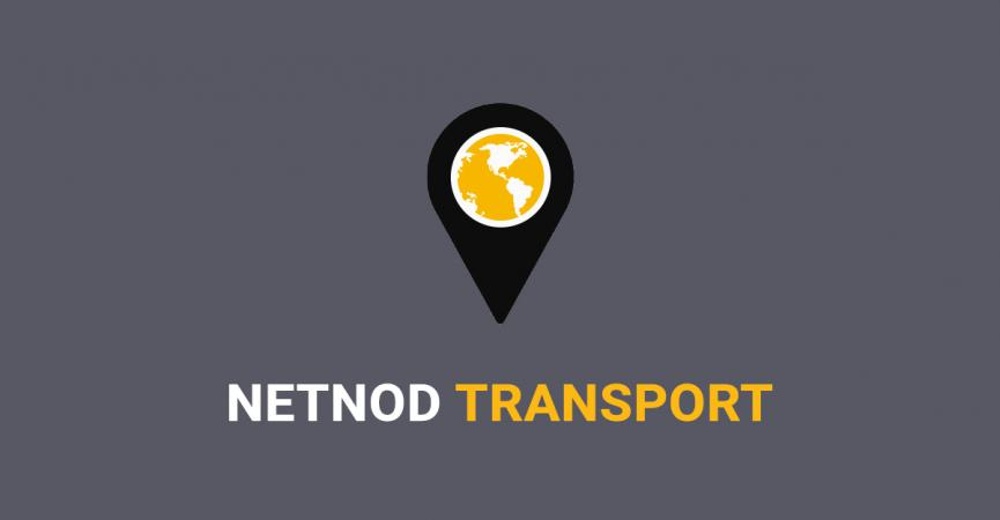
Who uses data centre interconnections?
With the huge rise in traffic not only into and out of data centres, but also between them, the ability to establish Data Centre Interconnection (DCI) has become increasingly important. Internet service providers, hosting providers and large enterprises are all turning to DCI services to introduce scalable, redundant and cost-effective transport solutions for developing their networks.
What is the technology behind DCI services?
This varies slightly based on whether you are talking about long-haul interconnects across regions, or interconnecting data centres in the same metro region. In the most recent deployments, both services depend on Dense Wave Division Multiplexing (DWDM). DWDM creates multiple wavelengths on a single optical connection by breaking light into different colours (or wavelengths) with each carrying an individual signal.
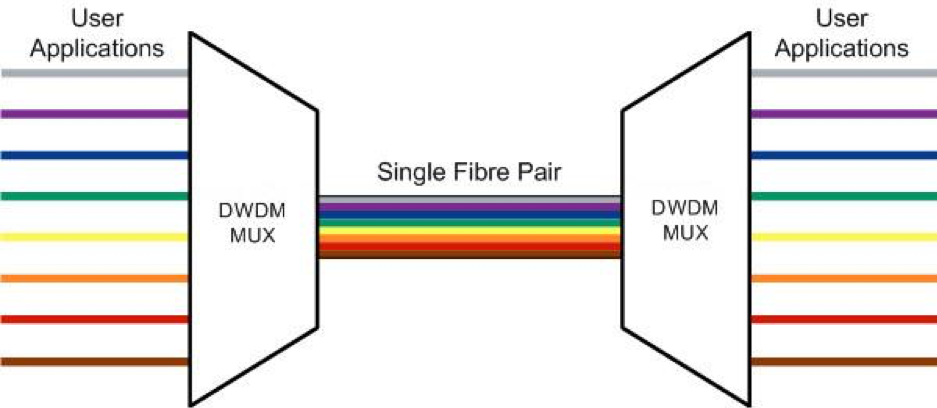
To enable DCI services, the 3 main elements can be summarised as:
-
Multiplexer and Demultiplexer (MUX/DEMUX): These enable the creation of multiple channels on a single line
-
DCI box: transponder equipment for high capacity interconnection between data centres
-
Reconfigurable Optical Add-Drop Multiplexers (ROADMs): These enable Software Defined Networking with interconnection across all network layers: optical, physical or data link network layers
The diagram below shows how these elements are deployed on Netnod’s DWDM platform.
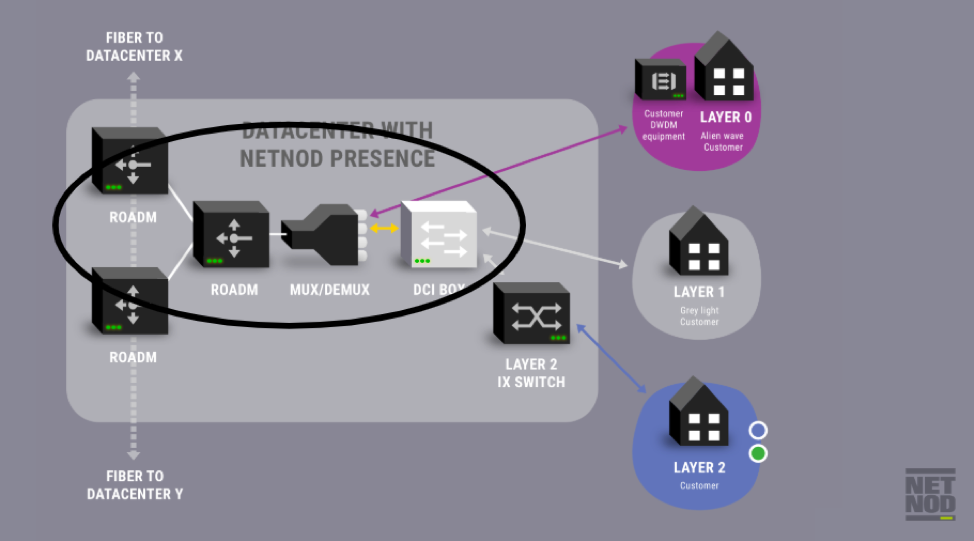
What are the benefits of DCI services?
Using a set up as shown above enables providers of DCI services, like Netnod, to aggregate many signals into one fiber pair, which leads to a massive increase in capacity. It enables network automation providing software defined networking at the optical layer. This makes it simpler and more cost-effective to add new on net data centres and services. For customers the benefits include:
-
reduced delivery time, automatic restoration and fault monitoring
-
significantly reduced costs and no Capex investment
-
flexibility, scalability and resilience
Why choose Netnod’s DCI services?
During 2017-8, Netnod ran a large-scale project to upgrade our infrastructure to run on a DWDM platform. This means that we have a network across Sweden, Denmark and Norway where we can offer 10G and 100G transport services with multiple routes and redundant connections.
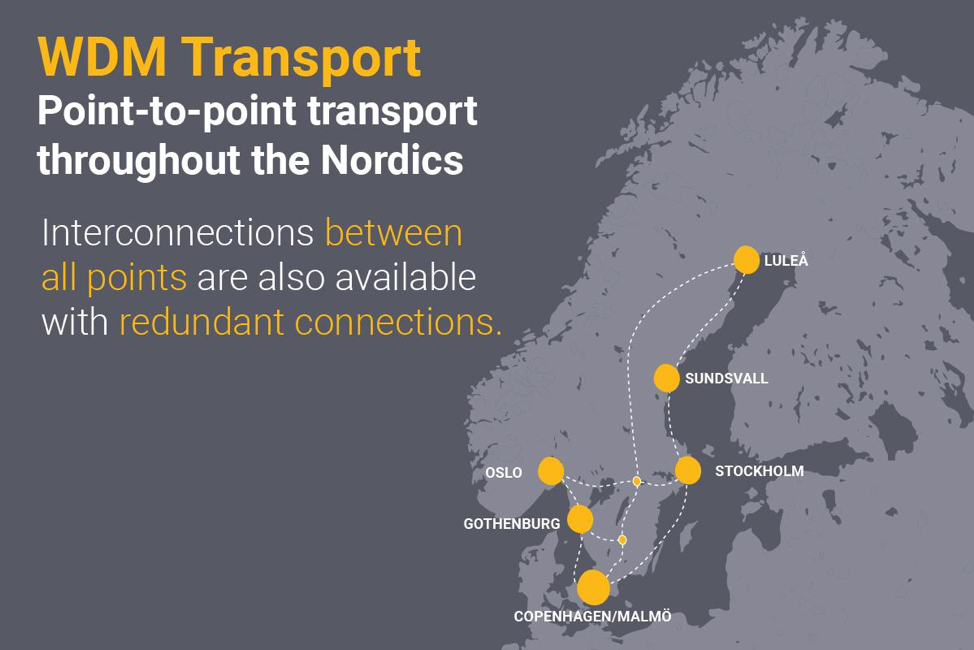
Netnod’s Metro Access service
Netnod’s Metro Access service is available at major data centres in Stockholm and Copenhagen. In Copenhagen-Malmo, our Metro Access service uses three diverse routes to ensure redundant and resilient interconnections across the region.
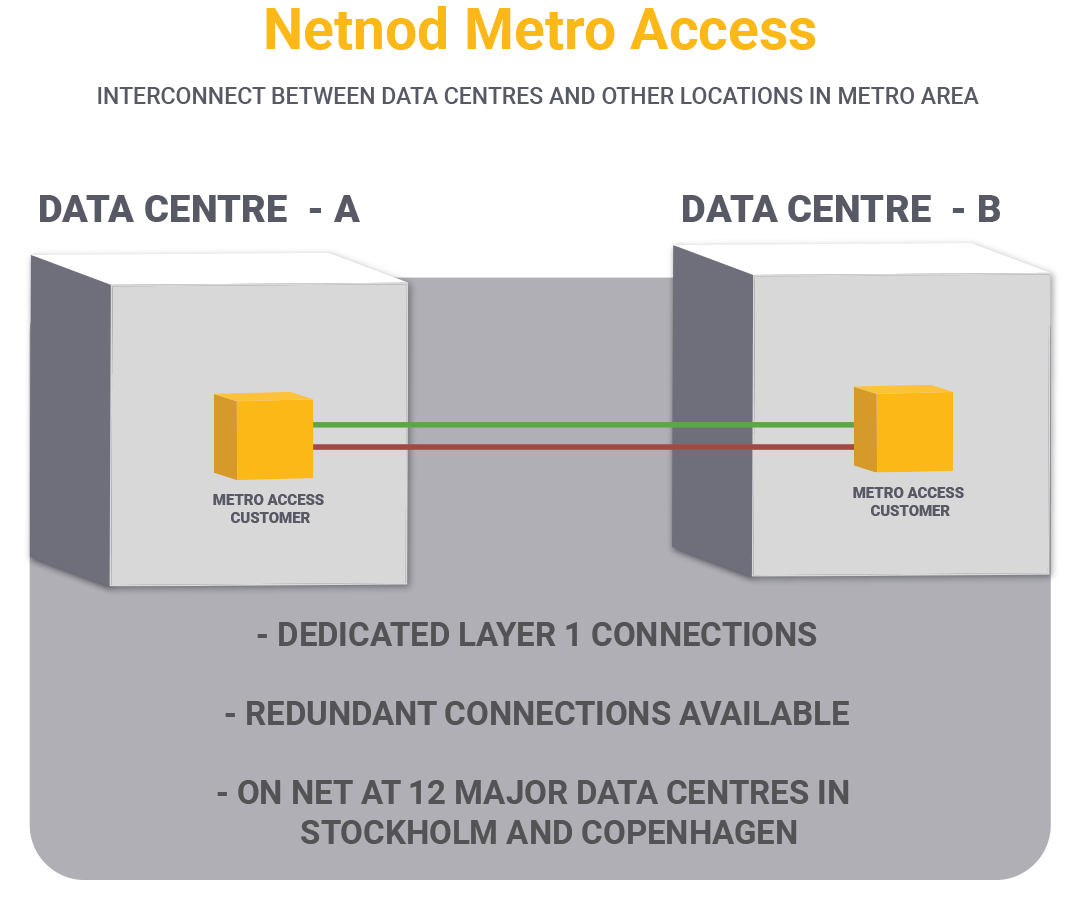
We have on-net locations at major data centres, and a fully provisioned service for local access.
More information about Netnod’s point-to-point transport services is available at: https://www.netnod.se/netnod-transport
About Netnod
Netnod provides critical infrastructure support ranging from interconnection services and Internet Exchanges to DNS services, root server operations and activities for the good of the Internet. As innovators at the core of the Internet with a worldwide reputation for our services and the expertise of our staff, we ensure a stable and secure Internet for the Nordics and beyond. Netnod’s range of activities include: running interconnection services and the largest Internet Exchange in the Nordics (länka till, https://www.netnod.se/ix) providing secondary DNS services to partners, enterprises and some of the largest TLDs in the world (länka till, https://www.netnod.se/dns) operating I-root, one of the world’s 13 root name servers (länka till, https://www.netnod.se/i-root) providing Time and Frequency (NTP, NTS and PTP) services for Sweden (Länka till https://www.netnod.se/time-and-frequency) Established in 1996 as a neutral and independent Internet infrastructure organisation, Netnod is based in Sweden and fully owned by the non-profit foundation TU-stiftelsen (Stiftelsen för Telematikens utveckling).